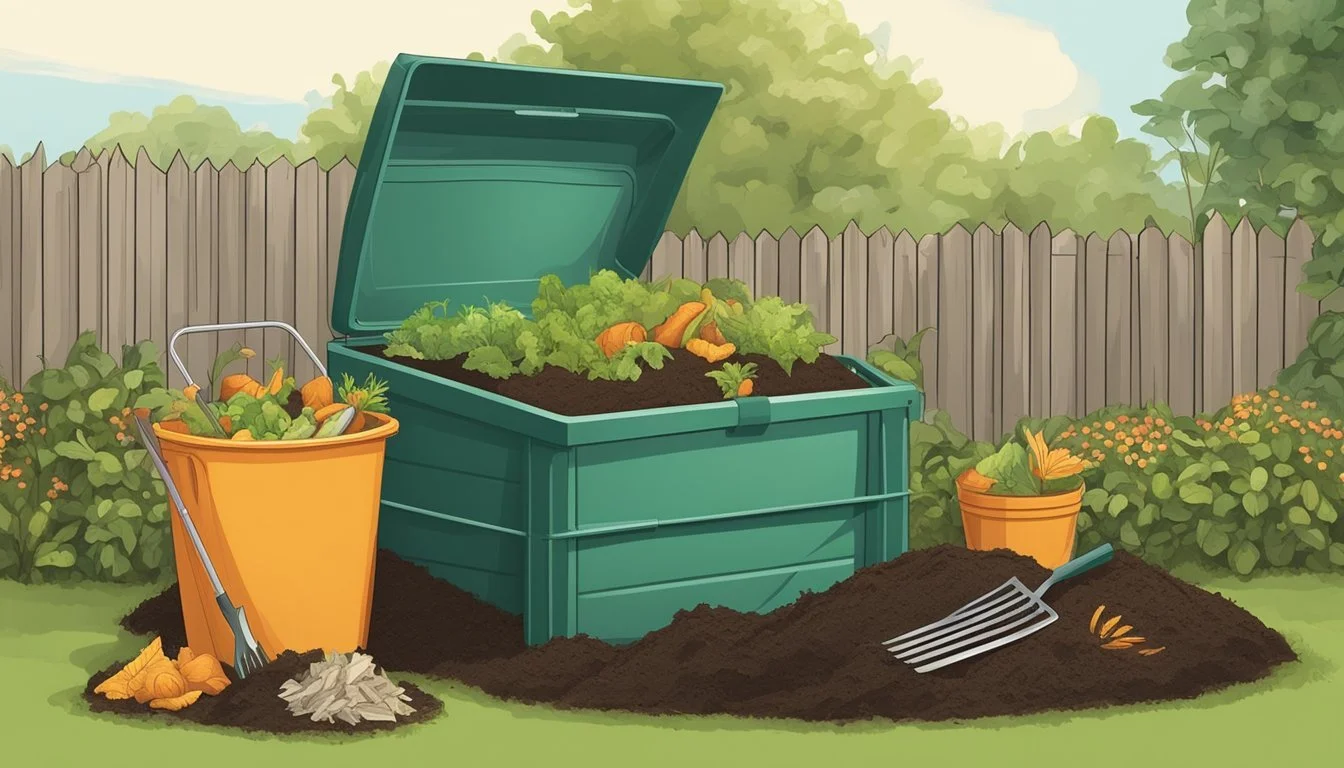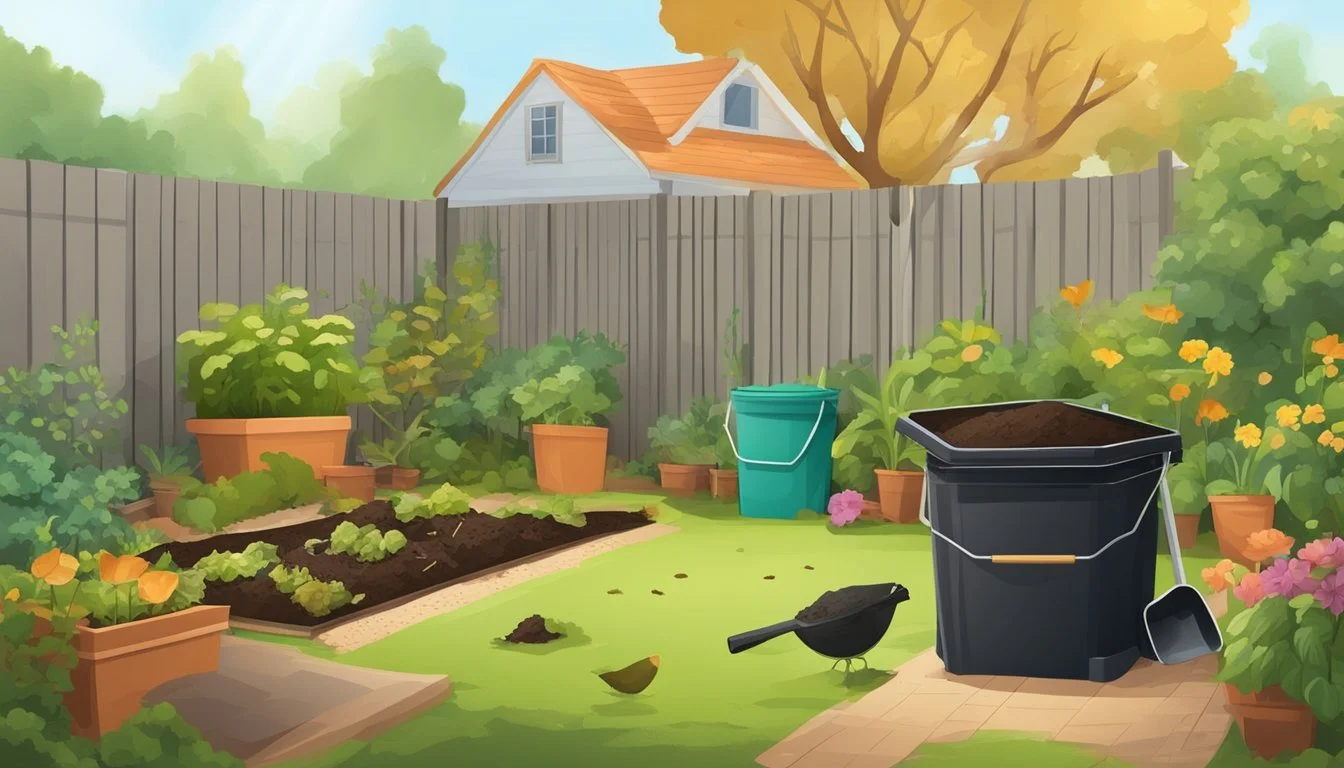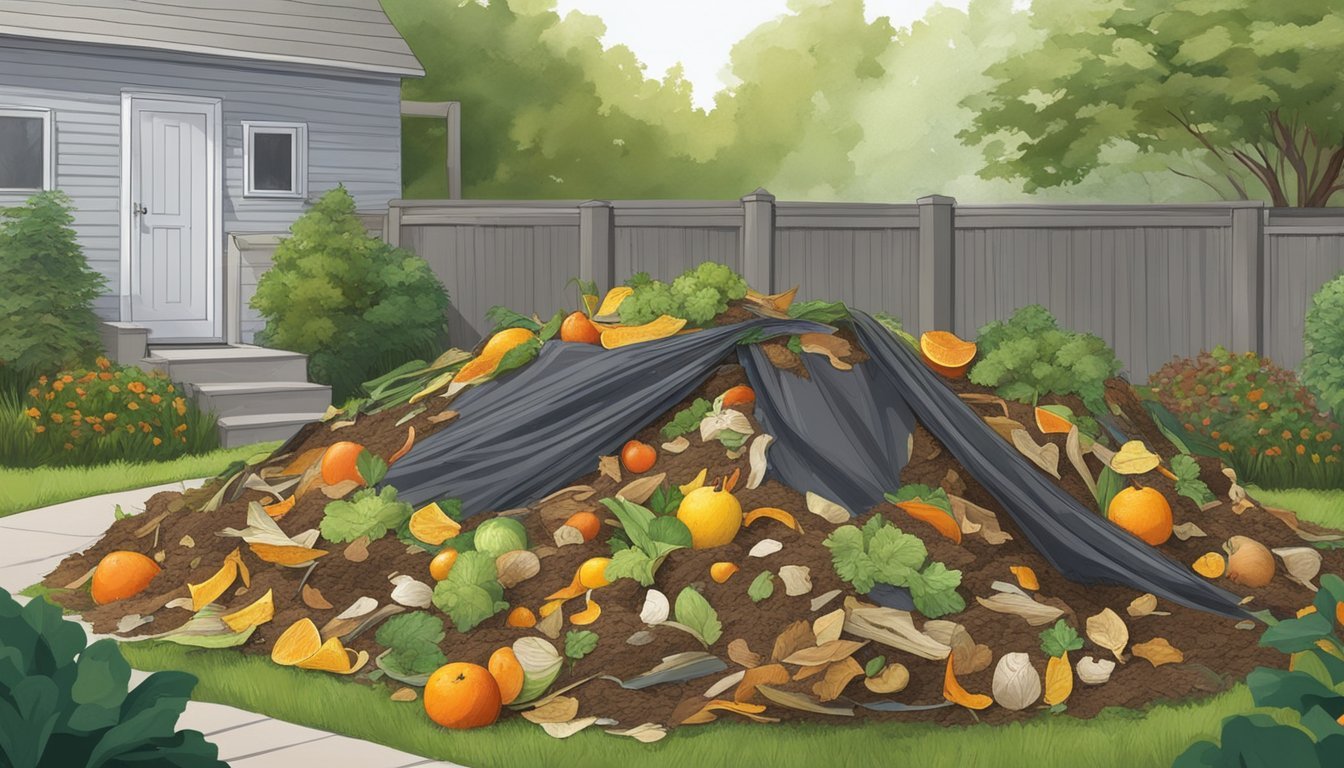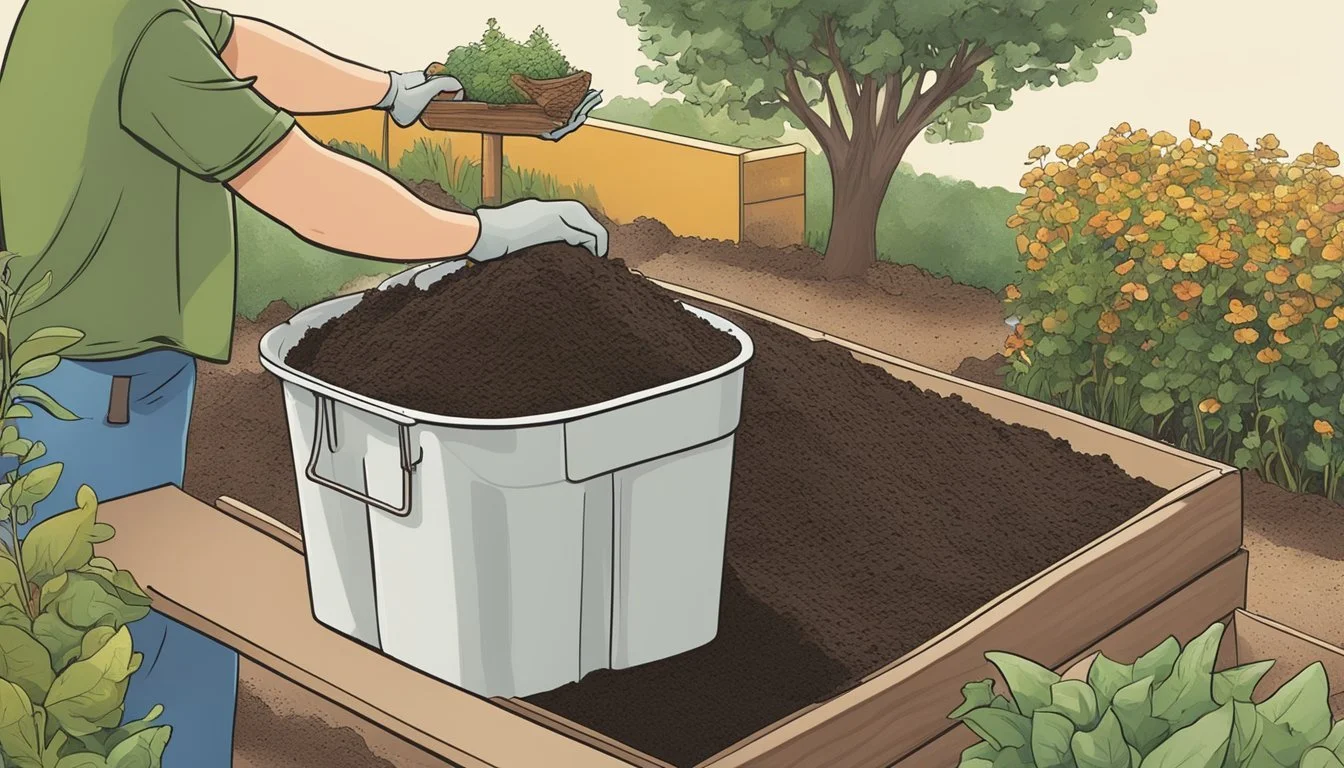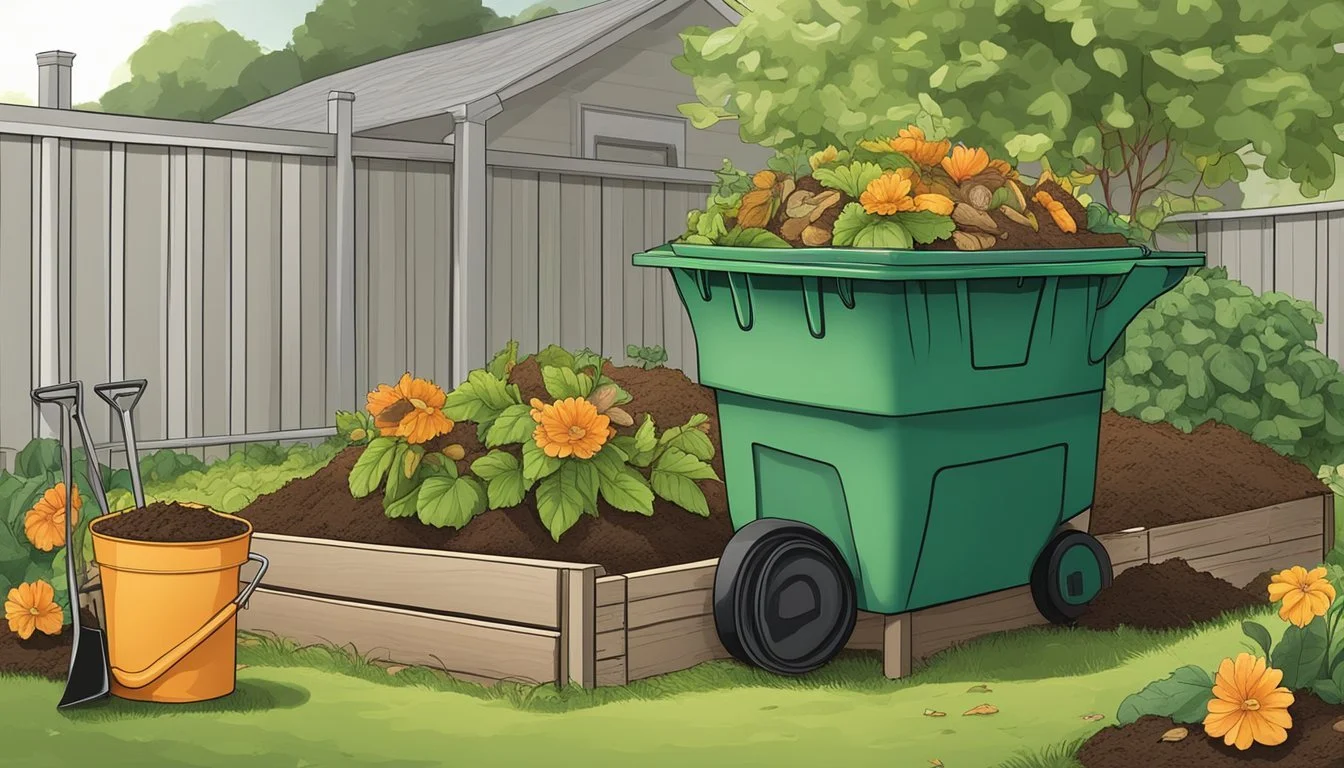Guide to Composting in Santa Clara, CA
Essential Tips for Beginners
Composting provides a sustainable method to transform kitchen scraps and yard waste into nutrient-rich soil amendments, offering numerous environmental benefits. Santa Clara's moderate climate and eco-friendly community initiatives make it an ideal location to engage in this natural recycling process. Residents can turn organic waste into valuable compost, which not only reduces the amount of material sent to landfills but also enhances soil health, conserves water, and reduces the need for chemical fertilizers.
Organizations within Santa Clara actively promote composting through educational programs and workshops. They teach residents about the essential elements of composting: browns (carbon-rich materials), greens (nitrogen-rich materials), air, and water. These components are crucial for maintaining a successful compost pile. The Sustainable Landscape Management initiative in Santa Clara County emphasizes the dual benefits of composting: responsible waste disposal and the production of organic material that can revitalize local soils and gardens.
Moreover, the city provides resources and support for home composting systems. This includes training programs where Master Composters guide individuals on how to effectively build compost piles and worm bins. There is also information readily available for those living in smaller spaces or multi-family units who want to contribute to composting efforts without the need for a large yard.
The Fundamentals of Composting
Composting is an essential method for recycling organic material, transforming yard trimmings, leaves, and food waste into nutrient-rich soil. This process relies on the careful balance of composting elements and provides numerous benefits for both gardeners and the environment.
Composting Basics
Composting is a natural process that requires four key elements: browns (carbon-rich materials), greens (nitrogen-rich materials), air, and water. The browns provide energy for microorganisms and can include items like dry leaves and branches. Greens are key to building the body of the compost and often consist of kitchen scraps and yard waste. For a compost pile to thrive, it is crucial to maintain a ratio of roughly three parts browns to one part greens. Regular turning adds air, which is critical for aerobic decomposition, and water keeps the pile damp but not soaked, creating an ideal environment for microbes to break down the material.
Benefits of Composting
Composting offers significant environmental advantages by reducing landfill waste and lowering methane emissions. It improves soil health by adding humus, which increases nutrient content and water retention in the soil. Landscapes benefit tremendously from compost as it provides a natural alternative to chemical fertilizers, fostering healthy plant growth.
Understanding Organic Material
Organic material in composting includes anything that was once living. Kitchen scraps like fruit and vegetable peels, eggshells, and coffee grounds make excellent composting material, along with yard trimmings such as grass clippings, leaves, and small branches. These materials are broken down by organisms such as bacteria, fungi, and insects, which convert them into a rich substance called humus. It is vital that a compost pile not include meats, dairy products, or oils, as these can attract pests and inhibit the composting process.
Setting Up Your Compost System
To successfully compost in Santa Clara, it's essential to select the appropriate compost bin, establish its location carefully, and choose a composting method suited to one's lifestyle.
Choosing the Right Compost Bin
When selecting a compost bin for either backyard or indoor composting, residents must consider space, utility, and material. A compost pile may be sufficient for spacious backyards, while contained bins are ideal for smaller spaces. Composting bins come in various materials like plastic, wood, and metal; each offers different benefits regarding durability and composting efficiency. Santa Clara County provides composting education to help residents make informed decisions.
Location and Setup
The location of a compost system is critical for its success. A backyard compost setup should be placed on a level, well-drained area that receives partial sunlight. It should be easily accessible yet not too close to living spaces to prevent any disturbance from potential odors. An indoor system requires a small, well-ventilated area away from high traffic and direct sunlight to prevent overheating. Guidelines for setting up a composting system are available from the Sustainable Landscape Management program in Santa Clara.
Composting Methods
Various composting methods cater to different needs. Traditional composting involves layering organic waste, which decomposes over time. Compost bins can be turned to aerate the pile and speed up the process. Vermicomposting uses worms to convert organic waste into high-quality compost and is suitable for both outdoor and indoor setups. For specific city guidelines, including curbside composting details, Santa Clara residents can refer to the curbside composting information from the area's waste management services.
Composting Materials
Successful composting in Santa Clara, CA, requires understanding what materials are suitable for compost piles and what should be avoided to maintain a healthy composting process.
What to Compost
Compostable materials are often categorized into "greens" and "browns". Greens provide nitrogen and include items such as fruit and vegetable trimmings, grass clippings, and coffee grounds. Here's a simple breakdown:
Fruit scraps: Apple cores, banana peels, grape stems
Vegetable trimmings: Carrot peelings, lettuce leaves, tomato ends
Grass clippings: Freshly cut grass, free of pesticides
Coffee grounds: Used coffee grounds, including paper filters
Brown materials, on the other hand, add carbon to the mix. Examples include:
Leaves: Dried leaves, preferably shredded
Sawdust: Untreated and non-varnished only
Green waste: General yard trimmings, excluding treated wood
A balanced compost pile should consist of both green and brown materials.
Items to Avoid
Certain items can disrupt the composting process or create unhealthy compost. These include:
Meat: Can attract pests and cause odor issues
Bones: Do not decompose easily and can attract animals
Dairy: Similar to meat, it can spoil and attract pests
Bread: Might harbor mold and attract unwanted pests
Treated wood: Contain chemicals harmful to the compost and the environment
Balancing Greens and Browns
A proper compost pile requires balance between its components. Aim for a ratio of about 3:1 with three parts "browns" to one part "greens". Here's how to maintain this balance:
Add leaves or sawdust if the compost is too wet or smelly, indicating excess nitrogen.
If the compost is too dry, increase the amount of fruit and vegetable trimmings or grass clippings.
Layering materials can help maintain this balance throughout the composting process.
Maintaining Your Compost Pile
To ensure a compost pile thrives, one must manage its aeration, moisture, temperature, and monitor its progression toward becoming rich, usable soil.
Aeration and Turning
A compost pile requires regular aeration to expedite the decomposition process. Oxygen is crucial as it fuels the aerobic bacteria that break down organic material. Without proper air circulation, a compost pile might become anaerobic, which is slower and often emits foul odors. Turning the pile every one to two weeks using a pitchfork or a compost aerator can introduce air and help maintain the pile's health.
Moisture and Temperature
The pile's moisture should be consistent with that of a wrung-out sponge, implying a moisture content between 40 to 60 percent. Water is essential as it aids microorganisms in breaking down compost materials. Conversely, ensuring the temperature of the pile is between 135-160 degrees Fahrenheit accelerates decomposition and kills pathogens and weed seeds. A compost thermometer can be used to monitor these conditions.
Monitoring Compost Progress
Observing changes in the compost pile over time is imperative to assess its health and readiness. The material at the bottom should become dark, crumbly, and earthy-smelling, signifying finished compost. This transformation could take anywhere from a few months to a year, depending on various factors like pile size and maintenance. One might opt to occasionally extract a small amount of compost to brew compost tea, an excellent nutrient-rich solution for plants.
Maintaining a compost pile may require attention to detail and patience, but the rewards of sustainable waste management and enriched soil are well worth the effort.
Using Finished Compost
Finished compost is a valuable amendment that can greatly enhance the fertility of garden soil. It provides a source of nutrients for plants and helps improve soil structure.
Harvesting Compost
Composting processes in Santa Clara—either through a cold or hot method—conclude with a curing period which allows the compost to stabilize. This process results in a product that is nutrient-rich and ready to use. The compost should look dark, crumbly, and have an earthy smell, with no remnants of the original organic materials visible. To harvest, one typically uses a screen to sift the compost, separating out any large particles that might need more time to break down.
Applying to Garden and Plants
When applying compost to a garden, it's best to spread a layer about two to four inches thick over the soil surface. For potted plants or specific planting areas, incorporating a few handfuls into the soil at the base of the plant will suffice. It's crucial to mix the compost evenly into the topsoil to avoid any 'hot spots' of nutrients that could potentially harm plant roots. Regular application can significantly improve soil consistency, thereby enhancing root growth and water retention.
Compost can be used in various applications, including as a top dressing for lawns, mulch for garden beds, and a soil amendment for new plantings. Consistently incorporating compost into soil management practices ensures a steady supply of organic material, leading to robust plant growth and a vibrant garden.
Community and Education
In Santa Clara County, residents have access to robust composting education through workshops and a dedicated education program. These initiatives are designed to enhance community knowledge and participation in composting practices.
Local Workshops and Resources
Santa Clara County offers a variety of local workshops to educate its residents on the benefits and methods of composting. These workshops cover topics like backyard composting and composting in small spaces, including techniques for worm composting. The aim is to promote waste reduction by turning yard trimmings and food scraps into valuable compost. Such workshops are best for those living in multifamily units or homes without yard waste facilities.
Residents can find a schedule of upcoming community workshops that cater to their specific composting needs. Information such as dates, locations, and presentation topics can be found through the Composting Education Program in Santa Clara County, which is a reliable hub for those seeking to learn and apply composting techniques.
Santa Clara County Composting Education Program
The Santa Clara County Composting Education Program (CEP) operates as a partnership between the cities and the county. It provides comprehensive composting education via various programs, including a Master Composter training course. The program leverages community classes to spread knowledge about composting, from the basics to more technical aspects.
Through this program, the county offers technical resources and educational materials, fostering a well-informed community when it comes to composting. It creates a network of residents armed with the knowledge to implement ecologically sound composting practices at home. To explore further or participate in a program, individuals can visit the education program's detailed web page.
Reducing Waste and Environmental Impact
Effective strategies in waste management are essential for reducing the environmental footprint of communities in Santa Clara, CA. By focusing on composting and recycling initiatives, the city can significantly lower the volume of waste that ends up in landfills, decreasing greenhouse gas emissions.
Composting and Waste Reduction
Composting plays a vital role in waste reduction by transforming organic matter into nutrient-rich soil amendments. Santa Clara residents are encouraged to compost food waste, vegetation, wood, and paper products, which not only reduces landfill waste but also contributes to soil health.
Residential Programs: Residents can participate in curbside collection services for organics and yard trimmings, ensuring that these materials are not wasted.
Mixed Waste Processing: Facilities in Santa Clara process mixed waste to extract recyclable and compostable materials, reducing the volume of waste that reaches the landfill.
Composting is not just a way of recycling natural waste but a method to protect and preserve the environment by minimizing the use of landfill space.
Impact on Greenhouse Gas Emissions
The decomposition of organic waste in landfills is a major source of greenhouse gas emissions due to the production of methane, a potent greenhouse gas. By composting, Santa Clara can mitigate these emissions because composting does not produce methane like anaerobic landfill environments do.
Landfill Diversion: By diverting organic waste from landfills, composting efforts in Santa Clara significantly reduce the city’s carbon footprint.
Recycling: Proper recycling practices complement composting by reducing the amount of non-organic waste in landfills, thus contributing to lower greenhouse gas emissions.
Santa Clara’s commitment to environmental programs aimed at recycling and waste reduction demonstrates a concerted effort to tackle climate change impacts locally.
Special Topics in Composting
In Santa Clara, CA, composting transcends the basic backyard pile. The community explores innovative approaches to composting, such as worm composting and inclusion of composting programs in schools and businesses.
Worm Composting
Worm composting, or vermiculture, is an efficient method to convert kitchen scraps and paper waste into nutrient-rich fertilizer. Santa Clara residents can participate in worm composting workshops to learn about maintaining worm bins. This hands-on approach is ideal for those with limited space and can be done indoors.
Essentials of Worm Bins:
Bin Types: Stackable trays or single containers
Bedding Material: Shredded newspaper, coconut coir, or aged compost
Worms: Red Wigglers are the preferred species
Composting in Schools and Businesses
Schools and businesses in Santa Clara are recognizing the importance of composting. The Home Composting Education program encourages educational institutions and corporations to incorporate composting into their sustainability initiatives. They can request Master Composters for events or ongoing composting programs.
Compost in Schools:
Educational: Enhances students' understanding of ecological cycles
Practical: Reduces school waste and can be used in school gardens
Compost in Businesses:
Environmental Impact: Significant reduction in the business's waste stream
Community Engagement: Demonstrates commitment to sustainability
For assistance and inquiries, the community can reach out to the Rotline for expert advice and resources on setting up and maintaining compost systems.
Support and Incentives
Residents and community members in Santa Clara, CA, have access to a range of support programs and financial incentives designed to promote composting practices. By engaging with these opportunities, individuals can contribute to environmental sustainability and enjoy benefits such as reduced green waste and enhanced garden health.
Discounted Composting Bins
Discounts on composting bins are offered to residents as a cost-effective way to encourage the practice of turning kitchen and yard waste into nutrient-rich compost. These programs may vary in terms of availability and eligibility requirements, but they typically allow individuals to purchase composting bins at a lower cost through municipal initiatives or partnerships with local organizations. For specific discounts and purchasing details, one can refer to services provided by organizations like the City of Santa Clara.
Master Composter Programs
Master Composter programs are educational initiatives aimed at training individuals in proper composting techniques. Participants learn to efficiently compost green waste and, importantly, how to share this knowledge with others in the community. Upon completing the program, Master Composters play a pivotal role in promoting the practice and the overall ethos of reuse through various outreach efforts, such as workshops and school programs. Details about the Master Composter Training Program can be found through the City of San José website.
Local Composting Regulations and Guidelines
Santa Clara County has established composting regulations to manage organic waste, aiming to reduce the environmental impact and promote soil health. These regulations align with California's mandates for organic waste collection and composting practices.
City of Santa Clara and Surrounding Areas
In the City of Santa Clara and throughout Santa Clara County, residents and businesses must comply with state laws regarding organic waste disposal. Following California’s SB 1383, jurisdictions like Santa Clara, San Jose, Sunnyvale, and Mountain View are required to have organic waste collection programs in place. Each area within the county has designed its approach to meet these obligations, which includes curbside collection services for organic materials.
Best Practices for Compliance
To comply with the County of Santa Clara's composting directives, residents and businesses should:
Separate organic waste: Include food scraps, yard trimmings, and other compostable materials.
Educate themselves regarding acceptable materials: Only place items in the compost bin that are designated as compostable by local guidelines.
Utilize provided services: Regularly use the curbside composting bins and services offered by local municipalities.
By adopting these best practices, individuals in Santa Clara County can significantly contribute to the state's efforts to reduce greenhouse emissions and promote environmental sustainability.
Frequently Asked Questions
What is composting and how does it benefit Santa Clara residents?
Composting is a natural process that transforms organic waste into nutrient-rich soil amendment. For Santa Clara residents, it reduces landfill waste and enhances garden soil.
How can residents in Santa Clara learn about composting?
Santa Clara offers a composting education program where residents can learn the basics of composting and obtain resources to start composting at home.
Are there any compost giveaways in Santa Clara?
Yes, there are compost giveaways. Events are scheduled for April 6 and August 17, 2024. Residents must bring a current utility bill or ID for verification. Details can be found on the City of Santa Clara website.
What materials are acceptable for composting in Santa Clara?
Acceptable materials for composting include fruit and vegetable scraps, yard trimmings, and other organic waste. It is important that compost bins are rodent resistant and food scraps are buried within the pile to prevent pests.
Is composting mandatory in Santa Clara County?
As mandated by California law, Santa Clara County requires each jurisdiction to provide organic waste collection methods. More information can be found on the County of Santa Clara website.
Who can be contacted for questions about composting in Santa Clara?
For inquiries, Santa Clara residents can contact the Environmental Programs staff at 408-615-3080 or via email as detailed on the Mixed Waste Processing page.
Conclusion
In Santa Clara County, residents and businesses benefit greatly from embracing composting practices. These efforts align with California's legislative push to reduce organic waste in landfills. Composting is more than a waste management solution; it is a crucial step towards environmental stewardship and sustainability.
The County of Santa Clara provides comprehensive resources and educational programs to encourage the community to compost effectively. By turning kitchen scraps and yard trimmings into nutrient-rich soil amendments, they contribute to a healthier, more sustainable environment.
Municipal strategies in Santa Clara have streamlined composting through curbside collection, adhering to the state's waste reduction mandate. Residents take pride in their progressive approach to organic waste, knowing the end product enriches their soils and conserves water.
Whether through home composting or participating in municipal programs, every effort made in composting helps Santa Clara move towards its sustainability goals. It is the responsibility of the community to continue fostering this eco-friendly practice for future generations.

